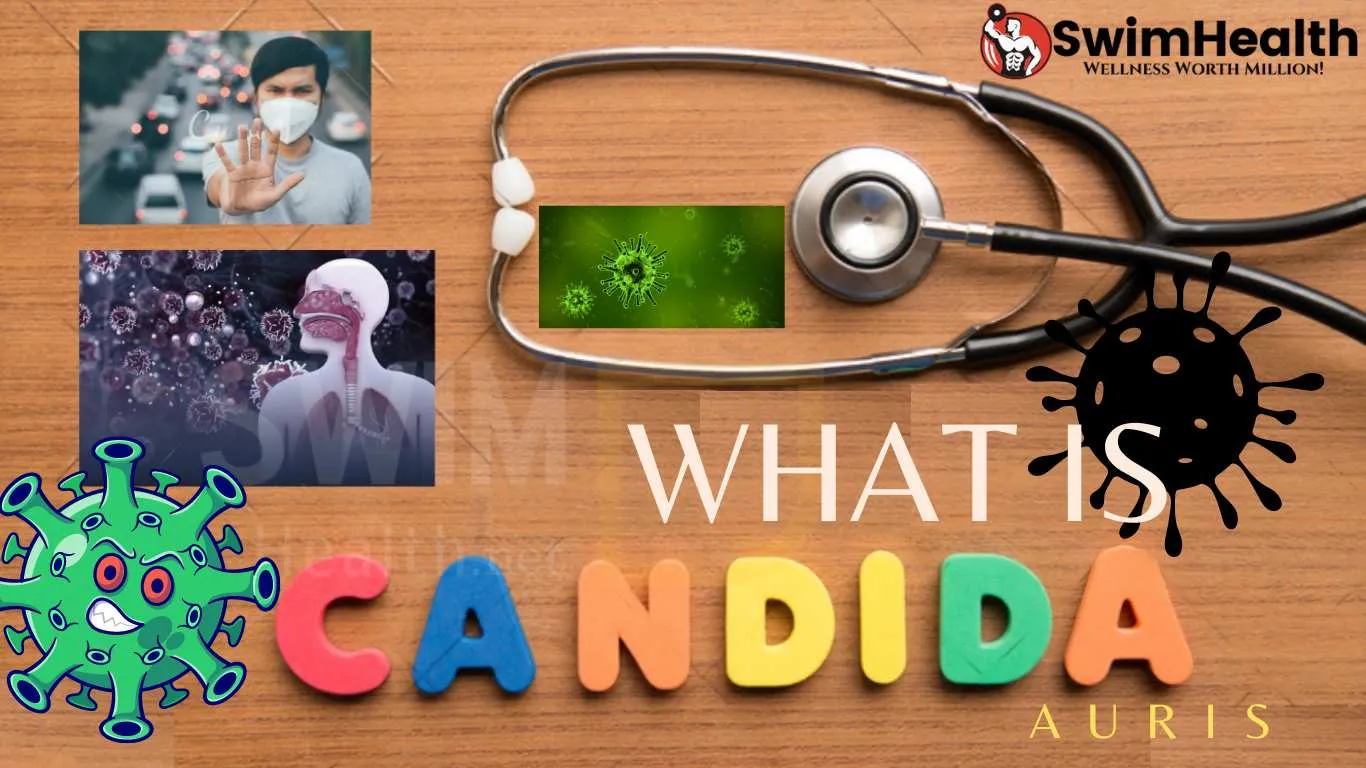In this discussion, we will delve into the world of Candida Auris – from understanding what it is and how it affects us, to exploring its symptoms, transmission methods, and available treatment options. So buckle up as we embark on a journey to uncover the secrets of this captivating yet dangerous fungal infection. Let’s dive right in!
What is Candida Auris
Table of Contents
Candida auris is a type of fungus that belongs to the Candida family. It was first identified in Japan in 2009 and has since become a global health concern. This particular strain of Candida is known for its resistance to antifungal medications, making it difficult to treat. In other words, Candida Auris is a multi-drug resistant fungus that has been causing concerns in the medical community. This opportunistic pathogen can cause serious infections, especially in people with weakened immune systems.
What sets this infection apart from other types of fungal infections is its ability to spread easily in healthcare settings. It can survive on surfaces for long periods of time and can be transmitted through direct contact with an infected person or contaminated objects.
The symptoms of Candida auris are often similar to other types of fungal infections, such as fever, chills, and fatigue. However, because it is resistant to many common antifungal drugs, treatment options are limited.
To diagnose Candida auris infection, a laboratory test called polymerase chain reaction (PCR) may be used. Treatment usually involves high doses of antifungal medication administered intravenously.
Prevention measures include strict adherence to hand hygiene protocols and proper cleaning and disinfection practices in healthcare facilities. This air borne virus is a highly-resistant fungus that poses significant challenges in both diagnosis and treatment. Its ability to spread easily within healthcare settings makes it crucial for healthcare providers to take necessary precautions to prevent its transmission.
Candida Auris Sintomas
Candida Auris Sintomas, or symptoms of Candida Auris, can vary depending on the individual and the severity of the infection. This resilient fungal pathogen primarily affects individuals with weakened immune systems, making early detection crucial.
One common symptom is persistent fever that does not respond to conventional treatment. Patients may also experience chills and fatigue, which can be mistaken for other illnesses. In severe cases, organ failure may occur.
Another telltale sign of Candida Auris is skin infections that do not heal or worsen despite proper hygiene measures. These infections often manifest as red rashes with intense itching or pain.
Invasive candidiasis caused by Candida Auris can lead to internal organ involvement and systemic infection. Symptoms may include difficulty breathing, coughing up blood-tinged phlegm, abdominal pain, nausea, and vomiting. It’s important to note that some individuals infected with Candida Auris may show no symptoms at all but still serve as carriers of the fungus. This highlights the need for vigilant screening and preventive measures in healthcare settings. If you suspect a possible infection or have been in contact with someone diagnosed with Candida Auris, it is essential to seek medical attention promptly for accurate diagnosis and appropriate treatment options tailored to your specific circumstance
Types of Candida Auris
There are Four Main Types of Candida Auris: clade I, clade II, clade III, and the newly identified South American genotype. Each type has its own unique genetic makeup and characteristics.
- Candida Auris Clade I is the most common type found globally and is associated with healthcare-associated outbreaks. It has been reported in various countries across continents such as Asia, Europe, Africa, and North America.
- Candida Auris Clade II is predominantly found in East Asian countries like Japan and South Korea. It differs from Clade I in terms of its genetic sequence but still poses a significant threat to public health.
- Candida Auris Clade III was first identified in India but has since spread to other parts of the world. It shares some similarities with Clades I and II but also exhibits distinct genomic differences.
The South American genotype was recently discovered in Colombia. Its emergence highlights the global spread of this fungal infection and underscores the need for vigilance worldwide.
Understanding these Different Types of Candida Auris is crucial for surveillance efforts and targeted interventions to control its spread effectively. By studying their genetic variations, researchers can gain insights into how this pathogen evolves and adapts over time.
Candida Auris Pronunciation
Now, let’s get into the nitty-gritty of how to pronounce Candida Auris. The pronunciation of this fungal infection may seem a bit tricky at first, but once you get the hang of it, it will roll off your tongue effortlessly.
To start off, let’s break down the two parts of the name: Candida and Auris. “Candida” is pronounced as can-di-duh, with emphasis on the second syllable. It almost sounds like candy with a “duh” added at the end! As for “Auris,” it is pronounced as or-is, rhyming with chorus without the “ch.”
Bringing both parts together, we have Candida Auris pronounced as can-di-duh or-is. Remember to stress that second syllable in Candida for proper pronunciation!
It’s important to be able to communicate effectively about this infection and its pronunciations help ensure accurate understanding among healthcare professionals and individuals alike.
So now you know how to confidently pronounce Candida Auris – keep spreading awareness about this serious fungal infection!
Understanding Fungal Infections
Fungal infections are caused by various types of fungi that can thrive in different environments, including the human body. These infections can affect different parts of the body, such as the skin, nails, and internal organs. Understanding fungal infections is crucial for effective diagnosis and treatment.
One common type of fungal infection is Candidiasis, caused by Candida species. Candida Auris is a specific strain within this group that has gained attention due to its multidrug-resistant nature. It primarily affects individuals with weakened immune systems or those who have undergone invasive medical procedures.
Other types of fungal infections include athlete’s foot (tinea pedis), ringworm (tinea corporis), and nail fungus (onychomycosis). These conditions often manifest as itchy rashes, redness, scaling, or discoloration of the affected area.
Fungi are opportunistic organisms that thrive in warm and moist environments. They can be transmitted through direct contact with infected surfaces or objects such as towels or clothing. Some fungal spores may also be present in the air we breathe.
Diagnosing a fungal infection involves clinical examination and laboratory tests to identify the specific type of fungus causing the infection. Treatment options vary depending on the severity and location of the infection but usually involve antifungal medications applied topically or taken orally.
To prevent fungal infections, maintaining good personal hygiene is essential. This includes keeping skin clean and dry, avoiding sharing personal items like towels or shoes with others, wearing breathable footwear in public spaces like gyms or swimming pools’ showers.
Awareness about fungal infections helps individuals recognize symptoms early on for prompt treatment and prevention strategies implementation.
What Causes Candida Auris?
Candida auris is a multidrug-resistant yeast that can cause severe infections in individuals with compromised immune systems. But what exactly causes this elusive and dangerous fungus to take hold in the body?
While the exact origins of this air borne infection are still being studied, it is believed that its emergence can be attributed to several factors. One possible cause is the overuse and misuse of antifungal medications, which has led to the development of drug-resistant strains like Candida auris. It may begin with like fever symptoms.
Another contributing factor may be the spread of the fungus through contaminated healthcare environments. Candidiasis has been found on various surfaces in hospitals, leading researchers to believe that it can easily transfer from person to person within these settings. Additionally, weakened immune systems play a significant role in allowing Candida auris infections to occur. Individuals with conditions such as diabetes or those undergoing immunosuppressive therapy are more susceptible to developing fungal infections.
It’s important to note that while these factors contribute to the occurrence of Candida auris infections, they do not guarantee infection will occur. Proper hygiene practices and infection control measures remain crucial in preventing its spread.
Symptoms of Candida Auris
This multidrug-resistant fungal infection, can manifest with various symptoms. The signs of Candida Auris infection may vary depending on the site of the infection and the individual’s overall health.
Invasive infections caused by Candida Auris can lead to bloodstream infections (candidemia), which can be life-threatening. Symptoms may include fever, chills, low blood pressure, and fatigue. These systemic symptoms are often accompanied by other manifestations such as confusion and organ dysfunction.
Skin infections caused by this Air Borne Infection is typically present as redness, swelling, and itchiness in affected areas. In some cases, blisters or pustules may form. Skin lesions caused by this fungus tend to be persistent and difficult to treat with conventional antifungal medications.
Respiratory tract infections due to Candida Auris can cause coughing, difficulty breathing, chest pain or discomfort, and sputum production.
It is important to note that not everyone infected with this Virus will exhibit noticeable symptoms. Asymptomatic carriers of the fungus can still spread it to others unknowingly.
Prompt diagnosis and appropriate treatment are crucial for managing Candida Auris infections effectively. If you experience any concerning symptoms or suspect an infection related to this fungus-consult a healthcare professional for further evaluation.
Skin Candida Auris
Skin Candida Auris is a specific type of fungal infection that affects the skin. It is caused by the Candida Auris fungus, which can also cause infections in other parts of the body. This particular form of Candida Auris primarily affects individuals with compromised immune systems or those who have been hospitalized for an extended period.
The Symptoms of Skin Candida Auris may include redness, itching, and a rash on the affected area. The skin may become dry or scaly, and there may be small blisters or pustules present. In severe cases, the infection can lead to open sores or ulcers.
Treating Skin Candida Auris typically involves antifungal medications applied directly to the affected area. These medications help to kill off the fungus and alleviate symptoms. Additionally, it is important to keep the skin clean and dry to prevent further spread of the infection.
To prevent Skin Candida Auris, practicing good hygiene is essential. Regularly washing hands with soap and water, especially after touching potentially contaminated surfaces, can help reduce the risk of infection.
It’s crucial to seek medical attention if you suspect you may have Skin Candida Auris or any other fungal infection on your skin. A healthcare professional will be able to diagnose your condition accurately and provide appropriate treatment options tailored specifically to your needs.
Candida Auris Transmission
Candida Auris is a highly contagious fungal infection that can easily spread from person to person. Understanding how this infection is transmitted is crucial in preventing its further spread.
One of the primary modes of transmission for Candida Auris is through direct contact with an infected individual or contaminated surfaces. This means that simply touching an infected person or object can put you at risk of contracting the fungus. It can also be transmitted through healthcare settings, where patients with weakened immune systems are particularly vulnerable.
Another way It spreads is through airborne transmission. When an infected person coughs or sneezes, tiny particles containing the fungus can become suspended in the air and inhaled by others nearby.
In addition, It has been known to survive on surfaces for long periods of time, making it easy for the infection to be contracted when coming into contact with contaminated objects such as bed linens, medical equipment, or even furniture.
To prevent transmission of Candida Auris, proper hygiene practices are essential. Regular handwashing with soap and water or using alcohol-based hand sanitizers can help reduce the risk of spreading the infection. Healthcare facilities should also follow strict cleaning protocols to ensure thorough disinfection of surfaces.
It’s important to note that anyone can contract Candida Auris if they come into contact with it. Therefore, being aware of how this fungus spreads and taking necessary precautions is vital in protecting oneself and others from this potentially dangerous infection.
Diagnosis and Treatment Options
When it comes to diagnosing Candida Auris, healthcare professionals face some challenges. First and foremost, it can be difficult to identify because its symptoms are similar to other fungal infections. In addition, traditional laboratory tests may not always detect the presence of this specific fungus.
However, there are specialized methods available for accurate diagnosis. These include blood cultures and polymerase chain reaction (PCR) testing, which can detect the genetic material of Candida Auris.
Once diagnosed, prompt treatment is crucial in managing a Candida Auris infection. Antifungal medications are typically prescribed to combat the fungus. However, it’s important to note that due to its resistance patterns, certain antifungal drugs may be less effective against this particular strain of Candida.
In such cases where standard antifungals fail or if the infection is severe or systemic, healthcare providers might consider using more potent antifungal agents or combinations of different drugs. Additionally, strict infection control measures must be implemented in healthcare facilities where outbreaks have occurred. This includes thorough cleaning and disinfection protocols along with appropriate isolation precautions for infected patients.
It’s vital for healthcare professionals worldwide to stay vigilant and informed about new developments regarding diagnostic techniques and treatment options as they continue their fight against this challenging pathogen.
Prevention and Precautions Against Candida Auris
When it comes to preventing the spread of Candida auris, taking precautions is essential. This multidrug-resistant fungus can be challenging to eradicate, but with the right measures in place, we can reduce its transmission.
One crucial preventive measure is proper hand hygiene. Regularly washing your hands with soap and water for at least 20 seconds helps eliminate any traces of the fungus that may have come into contact with your skin. If soap and water are not available, using alcohol-based hand sanitizers is a good alternative.
In healthcare settings, maintaining stringent infection control protocols is vital. This includes thorough cleaning and disinfection of surfaces using appropriate antifungal agents. Healthcare providers should also wear gloves and other protective equipment when coming into contact with patients who have been infected or suspected to be infected with Candida auris.
Furthermore, early detection plays a significant role in preventing the spread of this fungal infection. Individuals who develop symptoms such as fever, chills, or persistent infections should seek medical attention promptly.
Promoting awareness about this infection among healthcare professionals and the general public is paramount. Education on recognizing potential risk factors and implementing preventive measures can go a long way in containing its spread.
By following these prevention strategies diligently, we can help curb the impact of Candida auris outbreaks and protect vulnerable individuals from this resilient pathogen.
Candida Auris Cases 2023
As we look in the past year 2023, there was growing concern about the potential increase in Candida Auris cases. This elusive and drug-resistant fungal infection has been spreading across healthcare facilities worldwide. While it may not be making headlines like other diseases, Candida Auris poses a significant threat.
Health authorities were closely monitoring the situation as more cases continue to emerge. The ability of this fungus was to persist on surfaces and its resistance to common antifungal medications make it a formidable opponent for healthcare providers.
In past recent years, several countries have reported outbreaks of Candida Auris infections, including the United States, India, and South Africa. These incidents serve as a stark reminder that this infectious disease knows no boundaries.
The rise in Candida Auris cases is concerning due to its high mortality rate. Studies have shown that between 30% and 60% of patients infected with Candida Auris died from related complications.
Efforts are underway to develop new treatments and preventive strategies against this worrisome pathogen. Researchers are exploring alternative antifungal agents while also focusing on improving infection control measures within healthcare settings.
It’s crucial for both healthcare professionals and individuals to remain vigilant in preventing the spread of Candida Auris. Strict adherence to hand hygiene practices, appropriate disinfection protocols, and early identification can help curb further transmission.
While predicting specific numbers or trends for future cases is challenging, it is clear that we need continued efforts in research, surveillance, and public health interventions to combat this emerging global health threat.
By staying informed about the latest developments surrounding Candida Auris and taking proactive measures at all levels – from individual hygiene practices to comprehensive infection control policies – together we can strive towards minimizing its impact on public health.
Conclusion
Candida Auris is a highly concerning fungal infection that has been on the rise in recent years. This multidrug-resistant superbug poses significant challenges for healthcare professionals and patients alike. With its ability to cause severe infections, particularly in those with compromised immune systems, it is crucial to remain vigilant and take necessary precautions.
While the exact causes of Candida auris are still being studied, it is believed that factors such as global travel, hospital environments, and overuse of antifungals may contribute to its spread. Early detection and accurate diagnosis are key in effectively managing this infection.
Symptoms of Candida auris can vary depending on the site of infection but commonly include fever, chills, fatigue, and skin rashes. Prompt medical attention should be sought if any suspicious symptoms arise.
Diagnosis often involves laboratory testing to identify the specific strain of Candida involved. Treatment options for Candida auris can be limited due to drug resistance; however, antifungal medications tailored to the specific strain have shown some promise.
Prevention plays a vital role in controlling the spread of Candida auris. Strict adherence to infection control measures within healthcare settings is essential. Additionally, practicing good hand hygiene and avoiding unnecessary antibiotic use can help reduce the risk.
As we move forward into 2024 and coming beyond years, continued research efforts are needed to better understand this emerging pathogen and develop effective strategies for prevention and treatment.
By staying informed about Candida auris and taking appropriate precautions both individually and collectively as a society, we can work towards mitigating its impact on public health. Together we can combat this formidable foe!






